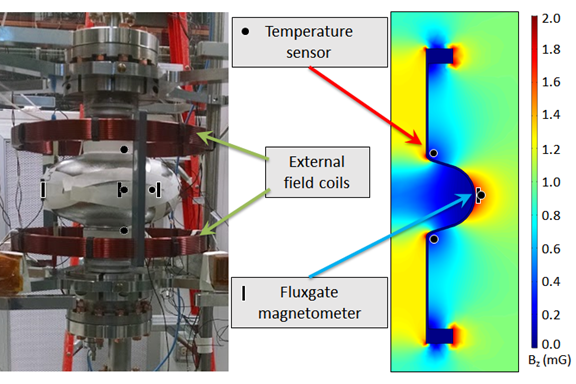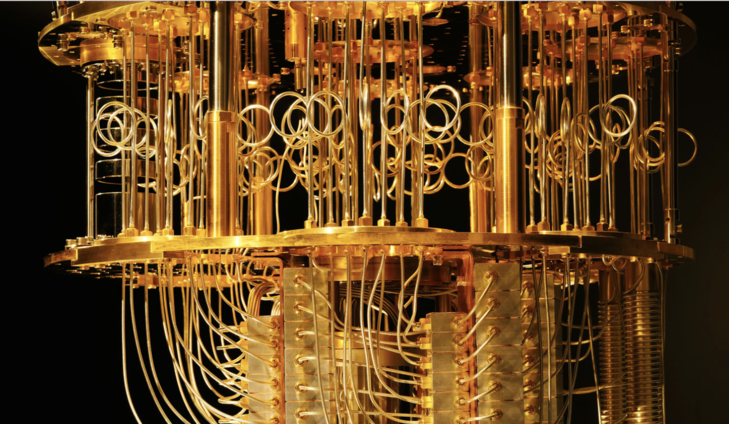
Materials Evolution
From Nb dominance to HTS alternatives like Nb₃Sn and MgB₂, enabling higher temperatures and simplified cryogenics.
Quantum Integration
SRF cavities enabling qudit generation with extended coherence times for next-generation quantum computing.
Executive Summary
Over the past decade, radio frequency superconducting technologies have undergone a transformative evolution, driven by the pursuit of higher performance, increased efficiency, and broader applicability across scientific, medical, and industrial domains.
Key Achievements
- World's first Nb₃Sn SRF accelerator achieving 4.6 MeV with cryogen-free operation
- MgB₂ films demonstrating 30% higher vortex penetration fields than Nb
- Quantum computing integration with SRF cavities for qudit generation
- HTS RF coils delivering 200-300% SNR improvement in MRI systems
Future Outlook
- Accelerating gradient targets of 90-100 MV/m with advanced materials
- Cryogen-free operation becoming standard across applications
- Industrial scalability driving cost-effective deployment
- Quantum-classical integration enabling new computational paradigms
1. Key Superconducting Materials for RF Applications
Critical Temperature Evolution
Tc = 9.2 K"] --> B["Nb₃Sn
Tc = 18.3 K"] B --> C["MgB₂
Tc = 39 K"] C --> D["YBCO
Tc = 90 K"] style A fill:#f8fafc,stroke:#1e40af,stroke-width:3px,color:#1e293b style B fill:#dbeafe,stroke:#1e40af,stroke-width:3px,color:#1e3a8a style C fill:#dcfce7,stroke:#16a34a,stroke-width:3px,color:#14532d style D fill:#fef3c7,stroke:#d97706,stroke-width:3px,color:#92400e
1.1 Niobium: The Workhorse Material
Niobium has been the cornerstone material for superconducting radio frequency (SRF) cavities for several decades, primarily due to its excellent superconducting properties, including a critical temperature (Tc) of 9.2-9.3 K and superior mechanical workability. [28] [231]
Performance Limits
- • Superheating critical field: 200-240 mT
- • State-of-the-art Eacc: 35-50 MV/m at 2K
- • Vortex penetration field: ~2000 Oe
- • Approaching theoretical performance limits
Current Challenges
- • Fundamental magnetic field limitations
- • Complex sub-2K cryogenic requirements
- • Need for alternative materials and coatings
- • Cost and complexity of large-scale systems
Despite these impressive achievements, the SRF community actively seeks new materials and approaches to push beyond current Nb-based technology limitations, particularly for future particle accelerators requiring even higher gradients and more efficient operation. [28]
1.2 Niobium Tin (Nb₃Sn): A Promising Higher-Temperature Alternative

A key breakthrough occurred when researchers at Cornell University demonstrated Nb₃Sn cavities with accelerating gradients exceeding 10 MV/m without the significant Q₀ drop phenomenon that had plagued earlier efforts. [2]
"The higher Tc of Nb₃Sn offers the potential for substantial reductions in cryogenic complexity and operational costs, potentially revolutionizing the accessibility of SRF technology."
— Cornell University Research Team
1.3 Magnesium Diboride (MgB₂): Cryogen-Free Potential
Discovered as a superconductor in 2001, MgB₂ has emerged as a highly promising material for RF applications due to its relatively high critical temperature (Tc ≈ 39 K) and simple binary composition, enabling potential "cryogen-free" operation around 10-25K. [1] [2]
Key Advantages
- • Absence of weak links at grain boundaries, unlike HTS cuprates
- • Two-gap superconductor with Δσ ≈ 2.7 meV (nearly twice Nb's gap)
- • Lower BCS surface resistance at elevated temperatures
- • Compatibility with cryocoolers for simplified operation
Recent advancements include successful coating of 3D structures like 3 GHz single-cell cavities using techniques such as Hybrid Physical-Chemical Vapor Deposition (HPCVD), with films demonstrating RF surface resistances lower than Nb at 4K. [5]
2. Theoretical Advancements and Material Science Breakthroughs
2.1 Enhancing Fundamental Material Properties
Critical Parameters
Significant theoretical and experimental efforts have focused on understanding and enhancing fundamental superconducting properties. For MgB₂, a ~200 nm thick film on Nb ellipsoids increased Hvp from 2100 Oe to 2700 Oe at 2.8 K, suggesting potential for 30% higher accelerating gradients. [28]
High-quality MgB₂ films have achieved ρn values ≤ 1 μΩ·cm and RRR values exceeding 80, demonstrating the material's potential for high-performance RF applications. [5]
2.2 Innovations in Thin Film Deposition
HPCVD
Hybrid Physical-Chemical Vapor Deposition for high-quality MgB₂ films
Multilayer Sputtering
Precise control for Nb₃Sn and complex structures
Electrochemical
Seed-free synthesis for ultra-smooth films
Bronze Method Innovation
A promising development is the "bronze method," where Nb thin films are deposited on bronze (CuSn) substrates followed by post-annealing to form the A15 Nb₃Sn phase. This approach is attractive for coating complex geometries due to the ease of casting CuSn. [5]
2.3 Superconducting Multilayers and Novel Structures

The development of superconducting multilayers represents a significant frontier in RF superconductivity. Theoretical proposals by Gurevich suggest that coating niobium with sequential layers of thin dielectric and superconductor can significantly increase surface breakdown fields. [29] [43]
Experimental work includes research on Nb₃Sn/Al₂O₃ superconducting multilayers for particle accelerators, combining superior superconducting properties with enhanced field management capabilities. [29]
"The successful implementation of these complex structures could lead to a new generation of SRF cavities with unprecedented performance, enabling more compact and efficient particle accelerators."
3. Practical Applications in Particle Accelerators
3.1 Pushing Acceleration Gradients and Quality Factors
Current State-of-the-Art
State-of-the-art Nb cavities are approaching fundamental limits set by the superheating critical field (Hsh,Nb ≈ 2280 Oe at 2K). When surface magnetic fields exceed this value, vortex penetration occurs, leading to drastic Q₀ degradation. [28]
Alternative materials like Nb₃Sn and MgB₂ offer pathways to higher gradients through their potentially higher critical magnetic fields and lower BCS surface resistances at elevated temperatures.
3.3 Domestic (Chinese) Developments: The IMP Nb₃Sn Accelerator

World's First Nb₃Sn SRF Electron Accelerator
A landmark achievement by the Institute of Modern Physics (IMP) of the Chinese Academy of Sciences, in collaboration with the Advanced Energy Science and Technology Guangdong Laboratory. Completed in early 2024, this system represents the world's first operational Nb₃Sn SRF accelerator. [75] [106]
Key Innovation: Liquid-Helium-Free Design
The system features a novel conduction-cooled design where Nb₃Sn cavities are cooled directly by cryocoolers, eliminating the need for complex liquid helium systems. This approach significantly reduces infrastructure costs and enables more compact accelerator designs. [105]
3.4 International Collaborations and Large-Scale Projects
CLIC at CERN
The Compact Linear Collider study is developing MgB₂ superconducting solenoid magnets operating at 20K for electron beam focusing in klystrons. A prototype MgB₂ solenoid, conductively cooled by cryocoolers, aims for a central field of 0.8T. [4]
Impact: Potential AC plug power savings with ~5,000 klystrons required for CLIC
Superconducting Power Links
A 60-meter flexible cryostat prototype using MgB₂ superconducting cables successfully demonstrated transmission up to 58.8 kA, highlighting potential for highly efficient power distribution in particle accelerators. [4]
Future: Technology slated for realization in late 2020s with broader grid implications
4. RF Superconductivity in Quantum Computing
Quantum Computing Development Timeline
4.1 Superconducting Qubits and RF Control

Superconducting qubits rely heavily on RF and microwave techniques for control and readout, operating at GHz frequencies similar to 5G technology. Each additional qubit requires dedicated RF control lines, creating scalability challenges as system complexity increases exponentially. [152]
Recent advancements focus on miniaturizing and integrating RF components closer to qubits, including the development of all-metallic superconducting RF switches that can control multiple qubits through a single cable. [128]
QueSt Project
EU-funded all-metallic superconducting RF switch
- • Operating frequency: ~1 THz
- • Near-zero power dissipation
- • Multiple qubits per cable
Berkeley Lab System
Modular RF control with mixing modules
- • Reduced size and cost
- • High-resolution signals
- • FPGA-based control
Integrated Solutions
Cryogenic RF electronics on silicon
- • HEMT amplifiers
- • Nb interconnects
- • Low-loss routing
4.2 SRF Cavities for Qudit Generation
Superconducting RF cavities are emerging as promising platforms for quantum information processing, particularly for storing quantum information as quantum d-level systems or "qudits." Fermilab's SQMS division is actively researching qudit-based quantum computing using single-cell niobium SRF cavities. [131]
Advantages
- • Significantly longer coherence times compared to 2D transmons
- • Smaller surface-to-volume ratio reduces losses
- • Larger accessible Hilbert space for complex computations
- • Reduced error rates for quantum memory applications
Challenges
- • Integrating nonlinear elements while preserving Q-factor
- • Managing Purcell decay and decoherence channels
- • Developing efficient gate schemes for qudit operations
- • Scaling to multiple qudit architectures
4.3 Domestic (Chinese) Efforts in Quantum Computing
SpinQ Technology
Complete systems including cryogenics and RF control electronics. [132]
SUSTech Breakthrough
Published in Nature Electronics, demonstrating viable modular architecture. [153]
Industry Applications
Origin Quantum successfully deployed superconducting quantum processors to enhance breast cancer screening accuracy, showcasing practical industrial applications of RF superconducting quantum technologies. [282]
5. RF Superconductivity in Medical Imaging
5.1 Superconducting Magnets and RF Coils in MRI

MRI systems rely heavily on superconducting technology, with Niobium-Titanium (NbTi) being the most commonly used material for main magnets. These systems operate at liquid helium temperatures (4.2K) to generate strong, stable magnetic fields up to 10T. [140] [143]
The RF subsystem is equally critical, with growing interest in using superconducting materials for RF coils to significantly reduce electrical resistance and thermal noise, thereby enhancing signal-to-noise ratio (SNR).
HTS RF Coil Performance
Time Medical's HTS RF coils demonstrate significant SNR improvements:
- • 200-300% improvement for proton imaging
- • 300-500% improvement for non-proton imaging (²³Na MRI)
- • Multi-frequency tuning capabilities
5.2 Potential of High-Temperature Superconductors
MgB₂ for MRI Magnets
MgB₂ (Tc ~ 39K) offers the potential for "liquid-helium-free" MRI systems by enabling operation at temperatures achievable with compact cryocoolers. This simplifies cryogenic design and reduces lifecycle costs. [138]
Development: MIT's Francis Bitter Magnet Laboratory is developing a 0.5T whole-body MgB₂ MRI magnet prototype. [150]
YBCO for RF Coils
YBCO (Tc ~ 90K) RF coils can operate above liquid helium temperatures, simplifying cryogenic design while delivering substantial SNR improvements, especially at higher field strengths. [136]
Commercialization: Time Medical's "SupMR" concept integrates HTS RF, magnet, and gradient technologies for revolutionary performance.
5.3 Trends Towards Cryogen-Free and Compact Systems
A significant trend in medical imaging is the move towards cryogen-free operation and more compact designs, driven by the desire to reduce operational complexity and improve accessibility in diverse clinical environments. [138] [144]
Cryogen-Free
Pulsed-tube cryocoolers replacing liquid helium
Compact Design
Smaller footprint for diverse clinical settings
Cost-Effective
Reduced operational and maintenance costs
Recent Progress
Recent developments in MRI-compatible cryostats utilizing low-noise pulsed-tube cryocoolers have made cryogen-free HTS RF coils more practical and user-friendly. This shift contributes to creating more portable MRI scanners, including ultra-low-field systems that benefit from superconducting RF coil integration. [156] [137]
5.4 Other Medical Imaging Modalities
Magnetoencephalography (MEG)
MEG systems measure femtotesla-level magnetic fields from neuronal activity using Superconducting Quantum Interference Devices (SQUIDs) that must operate at cryogenic temperatures (4.2K).
PET Isotope Production
Superconducting RF cavities in cyclotrons can accelerate particles for medical isotope production, leading to more compact, energy-efficient machines.
6. General Technology Trends and Future Outlook
RF Superconducting Technology Evolution
2000-2015"] --> B["HTS Exploration
2015-2020"] B --> C["Integration Era
2020-2025"] C --> D["Industrial Scale
2025+"] A --> A1["2K Operation"] A --> A2["Complex Cryogenics"] A --> A3["Scientific Focus"] B --> B1["Nb₃Sn Development"] B --> B2["MgB₂ Films"] B --> B3["4.2-20K Operation"] C --> C1["Cryogen-Free"] C --> C2["Quantum Integration"] C --> C3["Compact Systems"] D --> D1["Mass Deployment"] D --> D2["Cost Optimization"] D --> D3["Broad Applications"] style A fill:#e0f2fe,stroke:#0277bd,stroke-width:2px,color:#01579b style B fill:#f3e5f5,stroke:#7b1fa2,stroke-width:2px,color:#4a148c style C fill:#e8f5e8,stroke:#2e7d32,stroke-width:2px,color:#1b5e20 style D fill:#fff3e0,stroke:#ef6c00,stroke-width:2px,color:#e65100 style A1 fill:#f8fafc,stroke:#64748b,stroke-width:1px,color:#334155 style A2 fill:#f8fafc,stroke:#64748b,stroke-width:1px,color:#334155 style A3 fill:#f8fafc,stroke:#64748b,stroke-width:1px,color:#334155 style B1 fill:#f8fafc,stroke:#64748b,stroke-width:1px,color:#334155 style B2 fill:#f8fafc,stroke:#64748b,stroke-width:1px,color:#334155 style B3 fill:#f8fafc,stroke:#64748b,stroke-width:1px,color:#334155 style C1 fill:#f8fafc,stroke:#64748b,stroke-width:1px,color:#334155 style C2 fill:#f8fafc,stroke:#64748b,stroke-width:1px,color:#334155 style C3 fill:#f8fafc,stroke:#64748b,stroke-width:1px,color:#334155 style D1 fill:#f8fafc,stroke:#64748b,stroke-width:1px,color:#334155 style D2 fill:#f8fafc,stroke:#64748b,stroke-width:1px,color:#334155 style D3 fill:#f8fafc,stroke:#64748b,stroke-width:1px,color:#334155
6.1 Drive Towards Higher Operating Temperatures
A dominant trend over the last decade has been the drive towards achieving higher operating temperatures and simplified cryogenic systems. Traditional SRF accelerators using niobium require complex sub-2K infrastructure, spurring research into alternative materials with higher critical temperatures. [75]
Nb₃Sn at 4.2K
Enables commercial cryocooler operation with Q₀ values comparable to Nb at 2K
• Reduced infrastructure complexity
• Proven in IMP accelerator
MgB₂ at 20-25K
Cryogen-free operation with compact cryocoolers
• Significant cost reduction
• Industrial accessibility
Future HTS > 77K
Liquid nitrogen temperatures for ultimate simplicity
• Complete cryogen elimination
• Maximum accessibility
6.2 Exploration of Alternative Materials

The last decade has witnessed significant exploration of alternative superconducting materials and hybrid structures to overcome niobium's intrinsic limitations. This includes intensive research into Nb₃Sn, MgB₂, and more exotic materials like NbN, NbTiN, and high-entropy alloy superconductors. [209] [224]
The development of Superconductor-Insulator-Superconductor (SIS) multilayers represents a key strategy to enhance performance beyond single-material limitations. [199]
Hybrid Structure Advantages
- • Enhanced critical fields in thin films
- • Bulk substrate shielding from high RF fields
- • Accelerating gradients beyond single-material limits
- • Precise engineering of layer properties
Example: Coating Nb cavities with MgB₂ films has shown 30% increase in vortex penetration fields, while Nb₃Sn/Al₂O₃ multilayers combine superior properties with enhanced field management. [28]
6.3 Miniaturization and Integration
Quantum Computing Integration
The drive towards miniaturization is particularly evident in quantum computing, where reducing the size, weight, and power (SWaP) consumption of RF systems is crucial for scalability. [128] [132]
Key Development: Superconducting RF switches enabling multiple qubit control through single cables, drastically reducing cryostat penetrations.
Communication Systems
In communication systems, demand for higher data rates drives development of highly integrated RF modules using HTS filters in compact lumped-element configurations. [338]
Innovation: Multilayer LTS processes adapted for passive filter circuits, enabling stronger inter-resonator coupling and more compact designs.
6.4 Focus on Cost-Effectiveness
A growing focus over the past decade has been enhancing cost-effectiveness and expanding into broader industrial applications. This requires reducing both capital costs and operational expenditures associated with superconducting systems. [71] [192]
Cost Reduction Strategies
- • Higher-temperature operation reducing cryogenic complexity
- • Economical material production and fabrication processes
- • Simplified system integration techniques
- • Competitive lifecycle costs vs. conventional technologies
Industrial Applications
- • Medical isotope production accelerators
- • Materials processing systems
- • Communication network components
- • Quantum computing platforms
6.5 Advancements in RF Resonators and Filters
HTS Filters
YBCO filters operating at 77K with liquid nitrogen
LTS Multilayer
Nb-based multilayer processes for flexibility
MEMS Filters
Cryogenic BAW filters for qubit control
Future 6G Applications
The development of superconducting RF components continues to evolve, with exploration of new materials including graphene and ferrite materials to meet even more stringent requirements of future 6G communication systems. These materials offer potential for significantly improved electromagnetic and mechanical properties. [334]
Looking Forward: 2025 and Beyond
Immediate Future (2025-2030)
- • Commercial deployment of Nb₃Sn accelerators
- • Widespread adoption of cryogen-free MRI systems
- • Integration of SRF cavities in quantum computers
- • Industrial-scale production of HTS materials
Long-term Vision (2030+)
- • Practical quantum-classical hybrid systems
- • Ubiquitous superconducting RF in communications
- • Energy-efficient particle accelerators
- • Transformative medical imaging capabilities
"The convergence of materials science, quantum technologies, and industrial applications positions RF superconductivity as a cornerstone of next-generation technological advancement."